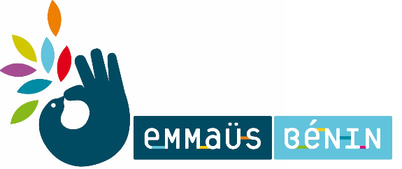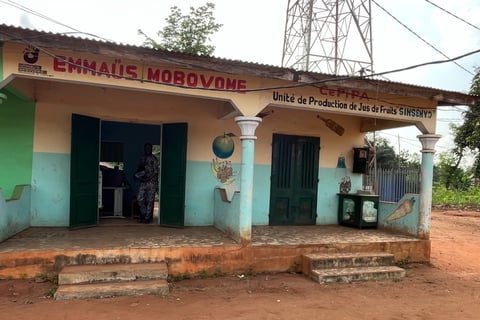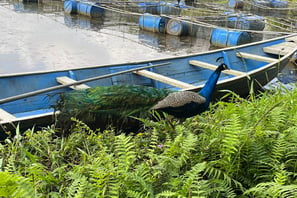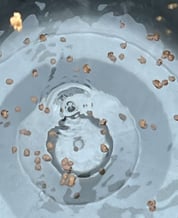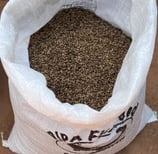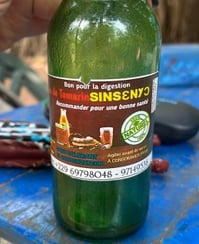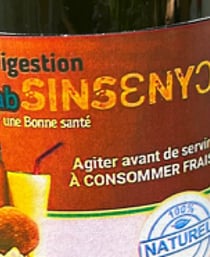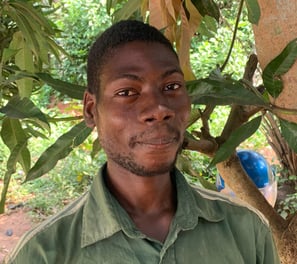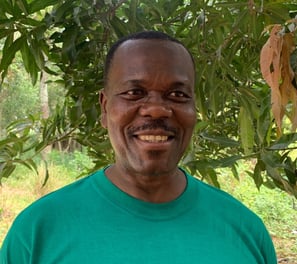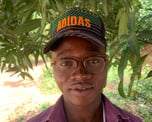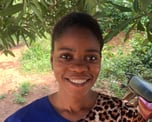Emmaüs MOBOVOME
We commit to supporting autonomy and improving the living conditions of marginalized people, while working for a healthy environment and the safety of individuals and property. Furthermore, we establish relationships with communities that share our goals and dedicate ourselves to the literacy of vulnerable populations.
Tchaada, commune difangni 02BP 606 Porto - Novo
+229 97265894 / +229 67067044
Contacts






In 1995, six women involved in the fight against poverty began growing vegetables on a community estate. Inspired by the values promoted by Emmaus Tohouè, such as the fight against social inequality, injustice and poverty, they decided to work with the movement from 1995 to 1999. This period enabled them to familiarise themselves with the world of solidarity and understand the way it works.
Faced with persistent poverty in rural areas, particularly affecting women, the elderly and children or young adults in difficult situations, the idea of going further was born. So in August 2004, MOuvement des BOnnes VOlontés pour le Mieux-Être (MOBOVOME) was officially created, under the impetus of Kevin Houngue Kandenou, its president and founder.
Since its creation, MOBOVOME has focused on developing projects for vulnerable groups, with a particular emphasis on empowering women in rural areas and combating inequality. In November 2023, MOBOVOME took an important step by becoming a member of Emmaus International, strengthening its commitment and influence within the global solidarity movement.
Our History
1995
1999
2004
2023
Discovery of EMMAUS Tohouè
Collaboration with EMMAÜS Tohouè
Creation of MOBOVOME
Becomes an affiliate member of Emmaüs International
To show goodwill towards those who are marginalized, neglected, or in difficulty in our society, by encouraging them to become autonomous.
To undertake any useful action for the improvement of the living conditions of the disadvantaged.
To fight for the creation and defense of a healthy, satisfying, and sustainable environment in the sub-region.
To contribute to the establishment of conditions necessary for the safety of individuals and property.
To establish relationships with all other communities having the same objectives.
To literate the poor and vulnerable strata of the population.
To make MOBOVOME a research center for students and professionals specialized in farm production areas.
To construct dormitories to shelter interns, trainers, volunteers, etc.
Our Objectives








Our Activities
Animal farming


Stages of Entomoculture










Black Soldier Flies
Larves
1.Produce
Feed
2.Cooking
3.Feeds
Fish
A portion of the larvae is kept to produce more black soldier flies and thus restart the cycle.
MOBOVOME raises black soldier flies to use the larvae for animal feed. These flies are very nutritious, rich in omega-3, and reduce the risk of disease in fish.
MOBOVOME also collaborates with several Beninese universities and high schools. MOBOVOME trains dozens of young people every year.
Numerous scientific expertises are carried out to improve the production of black soldier flies.
This system allows the farm to autonomously feed the fish.
The larvae are also given without being cooked.


Fish farming




Catfish
Red Tilapia
The 3 fish species raised at MOBOVOME:
Black Tilapia






MOBOVOME raises three different types of fish: clarias (catfish), black tilapias, and red tilapias. Clarias eggs and seeds are collected, and then reproduction is carried out artificially by the companions, while tilapias reproduce naturally in a controlled environment. The farm produces monosex tilapias.
Juvenile fish are raised in ponds and lakes, and then, at the fry stage, continue their growth in the lake. Once mature, after 2 to 5 months, the fish are then transferred to the ponds for sale.
The fish are fed three times a day.
MOBOVOME produces its own pellets for fish, poultry, and rabbits (except for chicks and young fish). These pellets are made from soybean meal, black soldier fly larvae, and corn. The companions manually mix the different ingredients and then form the pellets using an extruder. The pellets are then air-dried, a minimum of 24 hours depending on the sun and humidity.
MOBOVOME also plans to expand the artificial lake to install more floating cages and thus create jobs for the youth.
Artificial lake
Ponds
Industrial transformation of soy






The industrial transformation takes place in 3 stages:
Sorting of soy
Roasting
Pressing
1
2
3
MOBOVOME has a production line for soy oil and soybean meal. The companions manually sort, using sieves, bags of soy bought from a Beninese farm. Then, they roast the soy on the fire, and pass the soy seeds through an industrial press that runs on diesel to extract the oil and produce soybean meal.
A part of the soybean meal and oil are subsequently sold, and the rest of the soybean meal is used in the production chain for fish and rabbit feed.


Support for Women
















Market gardening
Plant Fiber
Chili Pepper
Vernonia
Basil
Okra
Lettuce
Carrots
Cabbage
Cucumbers
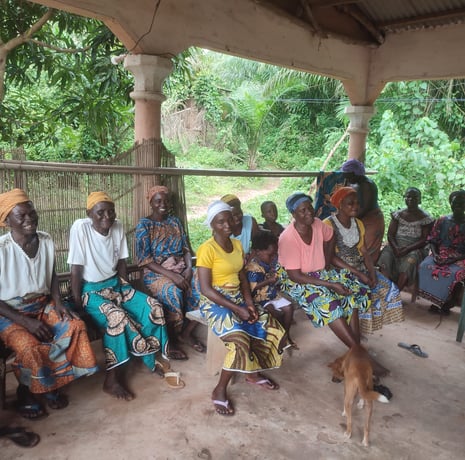

Women's Involvement in Production
A group of about forty women from the village is in charge of vegetable gardening. They cultivate approximately 3 hectares of land using a plank system; each woman being responsible for several planks. They produce a variety of plants: amaranth, great Morel, tomatoes, etc., and fruits like pineapple. The women make their own seedlings and nurseries.
The harvests are then sold in local markets.


Mutual Nutrition System
The women have established a mutual support system; each of them contributes to support those in difficulty, to feed their families or to educate their children.
Palm Oil Production
The women also produce palm oil in the village. They buy and rent equipment for production.


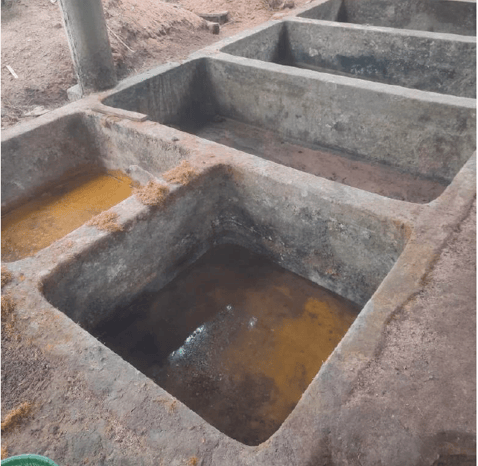

Press for Palm Oil
Transformation basins for nuts into palm oil






Animal Farming








Rabbits
Chickens
Gooses
Ducks
The breeding is intended for sale.
MOBOVOME has a chicken coop where they raise hens and chicks. The hens are fed every morning with the pellets they produce, except for the chicks.
The reproduction of the hens occurs naturally, and the incubation phase is carried out using an automatic incubator.
MOBOVOME also raises ducks and peacocks. These are left to roam freely and feed on what they find in nature and on soybean seeds.
Finally, rabbits are raised in cages. They are fed with pellets produced by MOBOVOME and dried leaves.
